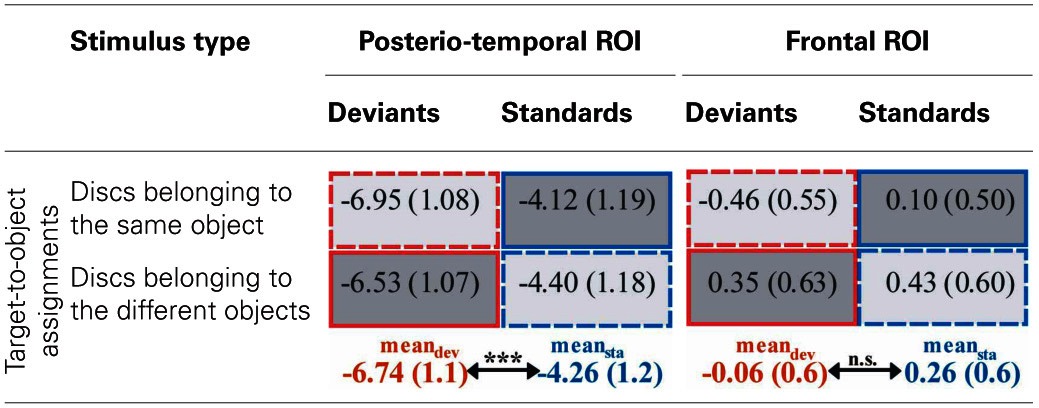Table 2.
Mean amplitudes (μV) elicited by deviants (red outlines) and standards (blue outlines) at posterio-temporal ROI (electrodes P5/6, P7/8, PO7/8) and frontal ROI (electrodes AF3/4, F3/4, F5/6) in the N2-latency range.

Responses are displayed separately for the two target-to-object assignments. SEM are given in parentheses. As in Table 1 cells containing responses given within one experimental condition are marked by identical gray-scale and line-style (dark-gray cells with solid outlines correspond to the “same-object-standard-condition,” light-gray cells with dashed outlines correspond to the “different-object-standard-condition”). Responses given to physically identically deviants and standards are contrasted line-by-line. Asterisks indicate significant differences between deviant- and standard-responses averaged over the two Target-to-object assignments (***p < 0.001).
Numerically the vMMN-amplitudes differed between the two target-to-object assignments (−2.83 ± 0.4 μV vs. −2.13 ± 0.4 μV when discs belonged to the same vs. different objects). However, within the present data this difference does not reach significance [interaction between the factors STIMULUS TYPE × TARGET-TO-OBJECT ASSIGNMENT F(1, 15) = 0.3, p = 0.1 when we conducted the ANOVA for the posterior ROI only].
